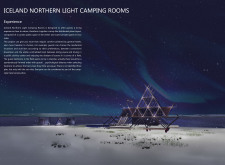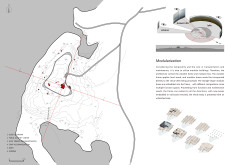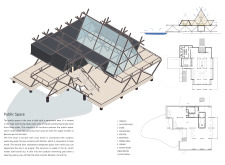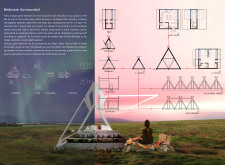5 key facts about this project
Central to the project are its innovative spatial configurations that prioritize flexibility. The layout ensures that various areas can accommodate diverse uses, from communal gatherings to quiet retreats, all within a cohesive framework. Expansive open spaces are punctuated by strategically placed partitions that offer a sense of intimacy without sacrificing the overall flow of the environment. The clever organization of rooms allows natural light to permeate throughout, creating inviting interiors that foster a positive atmosphere.
The architectural design employs a thoughtful selection of materials that speaks to both functionality and aesthetics. Reinforced concrete serves as the backbone of the structure, providing strength while allowing for innovative forms. Sustainable wood cladding wraps the building, introducing warmth and a tactile quality that connects to natural surroundings. The incorporation of glass elements is pivotal, as large windows blur the boundaries between the interior and exterior spaces, promoting an organic connection with nature. This choice not only enhances the visual appeal but also contributes to energy efficiency by maximizing daylighting opportunities.
Another noteworthy aspect of the project is its commitment to sustainability through the integration of green technologies. Features such as green roofs and rainwater harvesting systems are thoughtfully incorporated into the design. These elements not only serve practical purposes but also encourage the building's communion with its environment, reflecting a holistic approach that respects ecological systems. The orientation of the structure has been carefully considered to optimize solar gain, thereby reducing reliance on artificial heating and cooling methods, which underlines an environmentally conscious ethos.
What distinguishes this project is its unique engagement with the site and the local community. The design pays homage to regional architectural styles while simultaneously introducing modern elements that enhance its relevance. This blend of historical context and modernity creates a dialogue with the surrounding landscape, inviting local participation in the building's narrative. Artisanal craftsmanship is evident in the detailing of various aspects, which not only adds character but also supports the local economy, reinforcing the project's community-oriented framework.
The exterior landscape surrounding the building is equally important, designed to emphasize the integration of the structure within its environment. Thoughtful landscaping and outdoor spaces amplify the building's interaction with nature, encouraging outdoor activities and social engagement. Pathways and seating areas invite users to explore and connect, making the outdoors an extension of the architectural experience.
This project encapsulates a comprehensive architectural vision that goes beyond mere functionality. It serves as a model for contemporary design that respects its environment and enhances community dynamics. The balance of innovative design approaches with sustainable practices sets a precedent for future projects aiming to achieve similar outcomes. To gain a deeper understanding of this architectural endeavor, readers are encouraged to explore related architectural plans, sections, and designs that showcase the thought processes and ideas underpinning this remarkable initiative. Engaging with these materials provides valuable insights into the project’s comprehensive framework and its contributions to the architectural discourse.


























